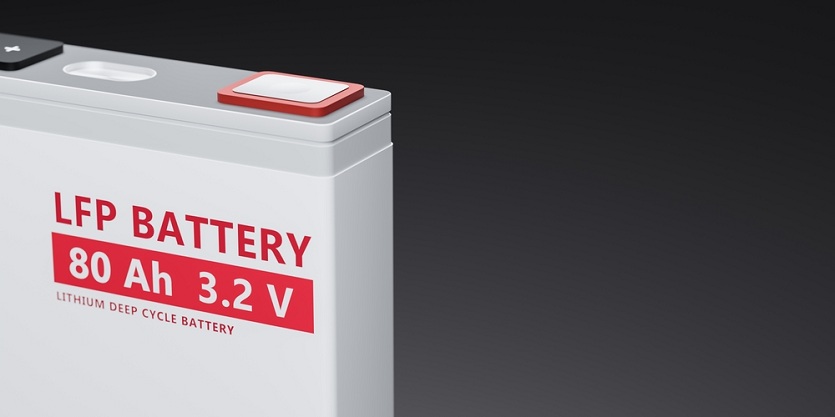Are you shopping for a LiFePO4 battery?
Wondering which one to pick for your solar power application?
You’ve come to the right place.
In the chart below, we compare six popular LiFePO4 batteries from Ampere Time, Renogy, BattleBorn, Eco-Worthy, AIMS and Lion Energy.
All are highly-rated batteries that are great for solar power systems, RVs, golf carts, auxiliary power, trailers and more.
To make this an apples to apples comparison as much as possible, we have chosen to review and compare each brand’s flagship 100Ah 12V battery.
If you don’t see a brand or model that meets your needs, please leave us a comment below.
Best LiFePO4 Batteries: Comparison
Here are the six LiFePO4 batteries reviewed and compared in this guide:
Here’s a chart comparing all the batteries on various features and specs.
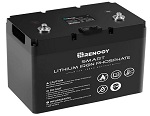
Renogy
Operating voltage
12.8VCapacity
100Ah (1280Wh)Max charge current
50AMax discharge
100AMax charge voltage
14.4VCharge temperature
32 to 131°FDischarge temperature
-4 to 140°FAdvertised life cycles
4000 @ 80% DoDSize (L x W x H)
11.4 x 6.8 x 7.4 inWeight
26lbsWarranty
5 yearsPrice
$$$$
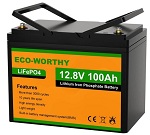
Eco-Worthy
Operating voltage
12.8VCapacity
100Ah (1280Wh)Max charge current
100AMax discharge
100AMax charge voltage
14.5VCharge temperature
32 to 131°FDischarge temperature
-4 to 140°FAdvertised life cycles
4000 @ 80% DoDSize (L x W x H)
10.2 x 6.6 x 8.2inWeight
22.4lbsWarranty
5 yearsPrice
$$
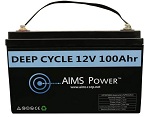
AIMS
Operating voltage
12.8VCapacity
100Ah (1280Wh)Max charge current
100AMax discharge
100AMax charge voltage
14.6VCharge temperature
32 to 113°FDischarge temperature
-4 to 149°FAdvertised life cycles
4000 @ 80% DoDSize (L x W x H)
12.7 x 6.5 x 9inWeight
28.5lbsWarranty
10 yearsPrice
$$$
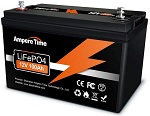
Ampere Time
Operating voltage
12.8VCapacity
100Ah (1280Wh)Max charge current
100AMax discharge
100AMax charge voltage
14.6VCharge temperature
32 to 122°FDischarge temperature
-4 to 140°FAdvertised life cycles
4000 @ 80% DoDSize (L x W x H)
13 x 6.8 x 8.5inWeight
24.2lbsWarranty
5 yearsPrice
$$
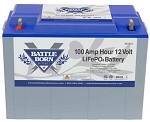
Battle Born
Operating voltage
12.8VCapacity
100Ah (1280Wh)Max charge current
50AMax discharge
100AMax charge voltage
14.6VCharge temperature
25 to 135°FDischarge temperature
-4 to 135°FAdvertised life cycles
3000 @ 80% DoDSize (L x W x H)
12.7 × 6.8 × 8.9inWeight
31lbsWarranty
10 yearsPrice
$$$$
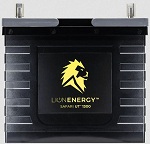
Lion UT 1300
Operating voltage
12.8VCapacity
105Ah (1344Wh)Max charge current
100AMax discharge
150AMax charge voltage
14.6VCharge temperature
32° to 113° FDischarge temperature
-4° to 131° FAdvertised life cycles
3500 @ 100% DoDSize (L x W x H)
10.2 x 6.6 x 9.8inWeight
23lbsWarranty
LifetimePrice
$$$$
Notes

Looking at the comparison chart, it’s clear that the six batteries are similar in many areas. But there are some notable differences and certain standout features in some of the batteries.
Here are some quick notes to help you choose the right one for your setup.
Pros & Cons Of LiFePO4 Batteries
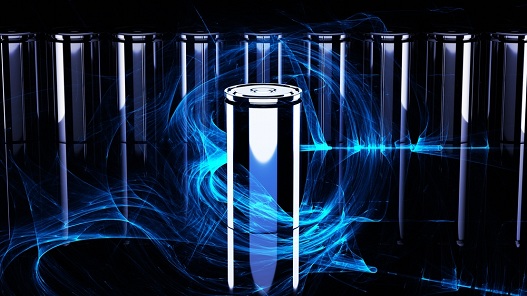
The Good
LiFePO4 batteries are increasingly becoming the energy storage of choice for solar systems, RVs, golf carts and other applications that require a deep cycle battery.
They are not only replacing older lead acid batteries, they are also more popular than other types of lithium-ion batteries.
LiFePO4 batteries, also called lithium phosphate, have several advantages over other battery chemistries.
Downsides of LiFePO4 Batteries
The biggest downside of LiFePO4 batteries is the price. They usually cost more upfront compared to other types of lithium batteries. They are much pricier than lead acid batteries.
Some brands can cost up to $1000 or more.
That said, they offer better value for money over the long term since they last much longer than lithium-ion and lead acid batteries.
While you’ll need to replace a lead acid battery every 2-3 years and a lithium-ion battery every 3-5 years, a LiFePO4 battery can last up to 10 years.
The other downside of LiFePO4 batteries is that they tend to be heavier and bigger compared to lithium-ion batteries.
That’s because they have a lower energy density.

